Clean - Condition - Care
The Aetolian Leather Care Guide
Our leather goods are built to last, but they still need a little TLC. That’s why we’ve made sure to include a leather care card with every purchase and it’s a brief note of what you can find here.
The Two Primary Types of Leather
Vegetable-tanned leather:
◊ Tanned using natural tannins from bark, leaves, and roots.
◊ Eco-friendly with no chemicals involved.
◊ Develops a rich patina over time, adding character.
◊ Requires regular conditioning to prevent cracking, as it’s not waterproof.
◊ Takes up to a year to process, resulting in excellent longevity.
◊ Has a distinct sweet, woody fragrance.
◊ Known for sturdiness; often used for saddles and holsters.
Chrome tan leather:
◊ Tanned using acidic salts, stabilizing the leather by cross-linking collagen fibers.
◊ Fast production process (in just one day).
◊ Softer and almost waterproof, resistant to scratches and stains.
◊ Requires less conditioning compared to vegetable-tanned leather.
◊ Less environmentally friendly due to the chemical tanning process.
When to use conditioners
- Condition leather 1-2 times a year, depending on its use and environmental exposure.
- Avoid over-conditioning, as it can harden the leather—less is more when it comes to conditioners.
What conditioner to use
- Vegetable-tanned leather: Use a natural, oil-based conditioner or a wax-based balm for added protection.
- Chrome-tanned leather: Emulsified conditioners or leather balms work best. Oil-based products are fine for thicker chrome-tanned leather, like boots.
How to properly use a conditioner
◊ Use three cloths: one for cleaning, one for conditioning, and one for buffing.
- Clean the leather with a soft, damp cloth.
Note: Once or twice a year you can use saddle soap. The saddle soap will remove any waxes and dirt from the surface, unclog the pores and permit the conditioner to penetrate into the fibres more easily. - Dry it naturally, away from direct heat sources.
- Apply a small amount of conditioner in circular motions. Allow it to absorb for about an hour.
- Buff the leather with a clean cloth.
Note: Always do a patch test before applying any conditioner to avoid discoloration or damage.
Dos and Don'ts
→ Regularly clean with a soft brush or cloth.
→ Air out leather occasionally.
→ Dry wet leather naturally, away from artificial heat.
→ Always patch-test cleaning or conditioning products.
→ Never machine wash leather or dry it near heat sources.
→ Avoid synthetic brushes, ironing, or tumble drying leather.
Cowhide Leather Care Guide
Cowhide leather is highly durable, making it ideal for various products such as furniture, jackets, and boots. Below is a guide on how to care for cowhide leather properly to ensure its longevity and retain its natural beauty.
Key Characteristics of Cowhide Leather

I. Cleaning Cowhide Leather
Regular cleaning prevents dirt and debris from settling into the leather, ensuring its longevity.
◊ Dust and Dirt: Use a soft cloth or brush to remove dust regularly.
◊ Spot Cleaning: For minor stains, dampen a cloth with water or mild soap and gently wipe the leather. Avoid soaking it.
◊ Deep Cleaning: Apply a dedicated leather cleaner. Always test in an inconspicuous area before full application. Rub in circular motions and allow the leather to dry naturally away from direct heat and sunlight.
II. Conditioning Cowhide Leather
Conditioning keeps the leather soft and prevents cracks, especially for thicker cowhide.
◊ Select a Suitable Conditioner: Use an oil- or wax-based conditioner for cowhide. This helps maintain its moisture, especially for items exposed to the elements.
◊ Application: After cleaning, apply the conditioner in circular motions with a cloth. Allow it to absorb for at least an hour, then buff off the excess with a dry cloth.
◊ Frequency: Condition cowhide leather 1-2 times per year or more frequently depending on use.
III. Protecting and Storing Cowhide Leather
Proper protection ensures your leather goods remain in great shape for years.
◊ Avoid Water Damage: If cowhide gets wet, blot the moisture immediately and let it dry naturally. Never use heat to dry leather.
◊ Sunlight Protection: Store cowhide away from direct sunlight to avoid fading and drying.
◊ Proper Storage: Keep your leather in a breathable cloth bag or box. Avoid plastic bags, as they can trap moisture and lead to mould.
IV. Dealing with Scratches and Scuffs
Cowhide, though durable, may still experience wear over time.
◊ For Minor Scratches: Apply a small amount of leather conditioner or oil to the scratch and rub gently to minimize its appearance.
◊ For Deeper Scuffs: You may need a leather repair kit for more significant damage. After treatment, condition the area to restore moisture.
V. Suede and Nubuck Cowhide
If your cowhide leather is treated as suede or nubuck, it requires special care:
◊ Brushing: Use a suede brush to maintain its texture.
◊ Spot Treatment: For small stains, use a soft cloth and specialized suede cleaner.
◊ Waterproofing: Protect the leather with a spray designed for suede or nubuck.
Pigskin Leather Care Guide
As an extension to our general leather care guide, here’s how to care for pigskin leather—a strong, flexible material with a unique, rugged look due to its natural scars. Pigskin is highly porous, requiring a specific approach.
Key Characteristics of Pigskin Leather

I. Cleaning Pigskin Leather
Regular cleaning is essential for pigskin leather, as its porous nature makes it prone to absorbing liquids.
◊ Use a soft brush (such as a horsehair brush) to remove dirt and dust.
◊ Avoid soaking the leather, as pigskin absorbs moisture quickly.
◊ For tough stains, use a mild leather cleaner designed for porous leathers. Test it on a small, hidden area first.
- Application: Gently apply the cleaner in one direction with a soft cloth, then repeat in the opposite direction.
- Dry naturally in a cool, dry space away from sunlight or direct heat.
II. Conditioning Pigskin Leather
To keep pigskin leather soft and prevent it from drying out or cracking, regular conditioning is necessary.
- Choose a mild, water-based conditioner that works well on pigskin or suede. Avoid silicon-based products.
- Apply lightly: Use a soft cloth and gently rub the conditioner in, following the same process as with cleaning. Work it in one direction, then again in the opposite direction for even absorption.
- Buff gently after conditioning, and allow the leather to air dry naturally.
III. Storage and Protection for Pigskin Leather
To maintain your pigskin leather’s quality over time, proper storage is essential.
◊ Store in a cool, dry place with low humidity. Avoid plastic bags, as they can trap moisture. Instead, use dust covers or hang the leather on wooden or plastic hangers.
◊ For items exposed to the elements, use a leather protectant spray that’s safe for pigskin to guard against moisture and stains.
Goatskin Leather Care Guide
Goatskin leather is known for its flexibility, durability, and soft texture, making it a popular choice for bags, boots, gloves, and accessories. Below is a guide to help you clean, protect, and maintain your goatskin leather goods, ensuring they last for years to come.
Key Characteristics of Goatskin Leather

I. Cleaning Goatskin Leather
Goatskin leather should be cleaned regularly to maintain its look and durability. Here’s how to do it:
◊ Dust and Debris: Regularly wipe down your leather with a soft, dry cloth to remove dust and dirt. This prevents grime from settling into the leather pores.
◊ Spot Cleaning: For small stains or dirt, use a soft cloth dampened with water and gently wipe the surface. Avoid soaking the leather.
◊ For deeper cleaning: Use a mild leather cleaner that is compatible with goatskin. Always do a patch test in a hidden area to avoid potential discolouration.
- Application: Apply the cleaner in soft, circular motions using a cloth. Wipe off any excess and let the leather dry naturally in a cool, dry area away from heat and sunlight.
II. Conditioning Goatskin Leather
To keep goatskin leather soft and supple, regular conditioning is essential:
◊ Choose a suitable conditioner: A mild, water-based leather conditioner is ideal for goatskin. Look for products designed for soft leathers, avoiding those with harsh chemicals or silicon.
◊ Application: After cleaning, apply a small amount of conditioner using a soft cloth. Gently rub it in with circular motions, making sure to cover the entire surface. Let the leather absorb the conditioner for about an hour, then buff off any excess with a clean cloth.
◊ Frequency: Condition your goatskin leather 2-3 times a year, or more often if exposed to harsh elements or heavy use.
III. Removing Scratches from Goatskin Leather
Scratches can be minimised with proper care:
◊ Leather Oil or Conditioner: Apply a small amount of leather oil or conditioner to the scratched area. Gently rub it in using circular motions. This can help reduce the appearance of scratches.
◊ Vaseline: For minor scratches, Vaseline can also work to soften and conceal them. Just apply sparingly, leave it for a few minutes, and then buff with a soft cloth.
IV. Protecting Goatskin Leather
To prolong the life of your goatskin leather, follow these protection tips:
◊ Avoid Exposure to Water: While goatskin is naturally more water-resistant, prolonged exposure to water can still damage it. If your leather does get wet, blot it dry and let it air-dry naturally—never use heat.
◊ Keep Away from Harsh Substances: Protect your leather from oils, hand cream, sanitiser, and other substances that could cause stains.
◊ Store in a Cool, Dry Place: Always store goatskin leather in a cloth dust bag or a breathable wooden box, not plastic. This allows the leather to “breathe” and prevents mould or mildew from forming.
◊ Avoid Direct Sunlight: Prolonged exposure to sunlight can cause fading and drying out of the leather. Keep it away from heat sources or direct sun when not in use.
V. Handling Suede Goatskin Leather
If your goatskin leather item is suede, special care is needed:
◊ Brush Regularly: Use a soft suede brush to remove dust and debris.
◊ Treat Spills Immediately: Use a damp cloth to blot spills, and for stains, sprinkle corn starch over the area and leave it overnight to absorb moisture.
◊ Protection: Use a suede-protecting spray before using the item to help shield against stains and moisture.
VI. Storing Goatskin Leather
Proper storage is crucial for maintaining the shape and quality of goatskin leather:
◊ Avoid Plastic Bags: Store your leather in a breathable cloth bag or box to prevent moisture buildup.
◊ Prevent Shape Deformation: Don’t let heavy items sit on top of your leather goods. Leather can change shape if left compressed for long periods.
◊ Control Humidity: Excessive humidity can damage the texture of your leather. Keep your leather goods in a cool, dry place with balanced humidity.
Conclusion: Taking Care of Your Leather
Whether you own vegetable-tanned, chrome-tanned, goatskin or pigskin leather, following these simple steps will help you keep your leather goods in excellent condition for years. Stay tuned for updates to this guide, including care tips for lambskin in the near future.

Table of Contents

